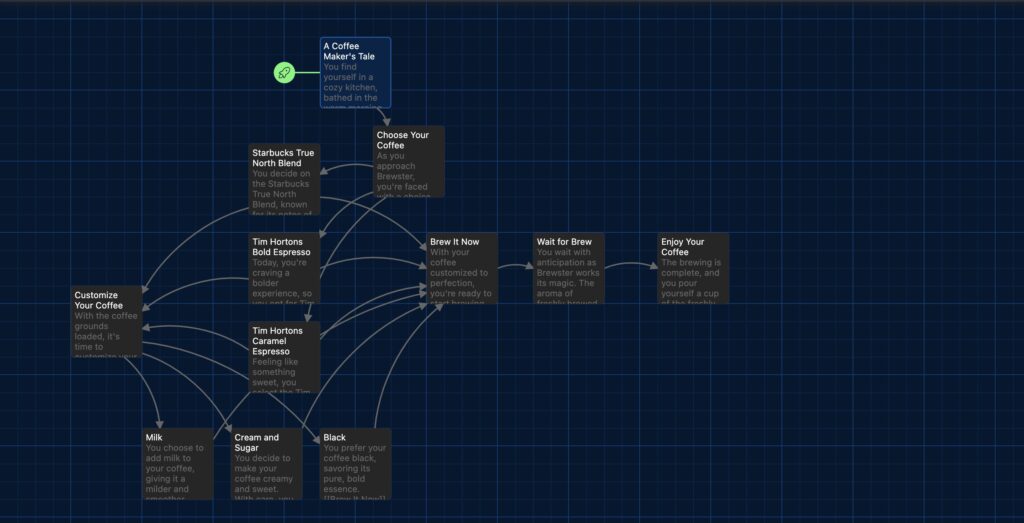During this module, we explored different components essential to effective storytelling and engaged in experimenting with video as an educational tool.
Tool used- Twine
Twine is the tool that helped me in creating an interactive story, as mentioned below. I was able to create the branching narratives (Twinery.org, 2023). This tool helped me in creating a dynamic as well as an appealing storytelling experience.

With the help of Twine, I was able to develop an immersive as well as detailed guide with respect to the steps involved in brewing a cup of ice coffee.



Using the application of Twine was an extremely interesting experience, as I learned how to logically present the flow of the entire narrative.
Reflection Questions for Storytelling
- What storytelling techniques have you used instinctively?
In order to create the video on how to prepare coffee, I used the strategy of “Show. Don’t tell.” My aim of using this strategy was to fully engage the viewers by constructing the coffee-brewing process scene-by-scene (Chibana, 2022). My storyboard as well as the accompanying video aimed to take viewers into the kitchen through the sensory and visual elements, allowing them to virtually experience the process of brewing a coffee. I created the narrative that will make it possible for the viewers to follow along as if they were there byk visually outlining each shot and highlighting details such as the steam rising from the hot water as well as the rich aroma of the coffee as it poured into the glass. This method helped me in making the video entertaining as well as informative, along with giving viewers an experience that they would remember for long.
- Which storytelling technique requires more work for you?
I believe that “Immerse your audience in a story” is indeed the storytelling technique that needs more work from me in order to effectively demonstrate my story because it requires detailed and realistic representation of the scenes, characters, as well as settings in order to make the audience imagine watching a complete movie. Informing is not enough; I also need to use all of my senses to create an immersive story (Chibana, 2022).
- Which techniques will you focus on moving forward?
The technique I would focus on moving forward in the case of displaying a video on making coffee with a coffee maker is “Show. Don’t tell.” This strategy works well to give the audience an engaging as well as unforgettable experience, as seen by the TED presenters’ techniques (Chibana, 2022). Through the shared appreciation of a well-brewed glass of ice coffee, this technique will not only educate the audience about coffee brewing methods but also establish an emotional connection with them.
References
Chibana, N. (2022, September 27). 7 storytelling techniques used by the most inspiring ted presenters. Visme Blog. https://visme.co/blog/7-storytelling-techniques-used-by-the-most-inspiring-ted-presenters/
Mayer, R. E., Fiorella, L., & Stull, A. (2020). Five ways to increase the effectiveness of instructional video. Educational Technology Research and Development, 68(3), 837–852. https://doi.org/10.1007/s11423-020-09749-6
Twinery.org. (2023). Twine is an open-source tool for telling interactive, nonlinear stories. Twine / An open-source tool for telling interactive, nonlinear stories. https://twinery.org/
